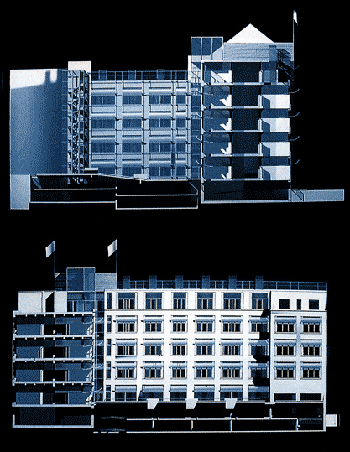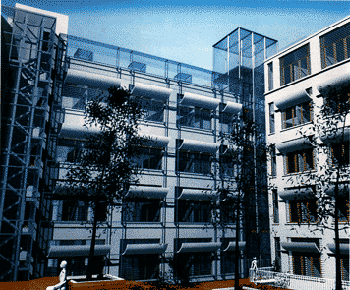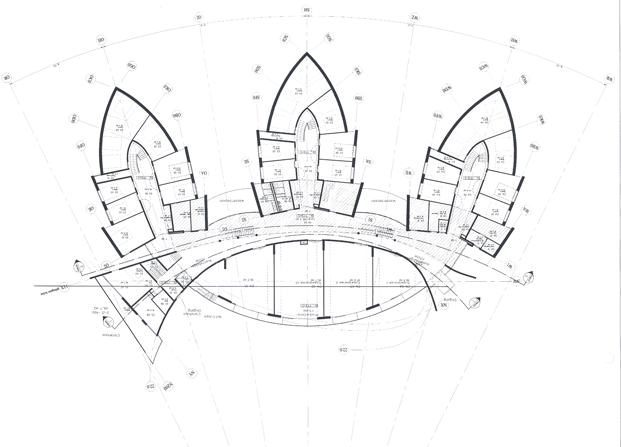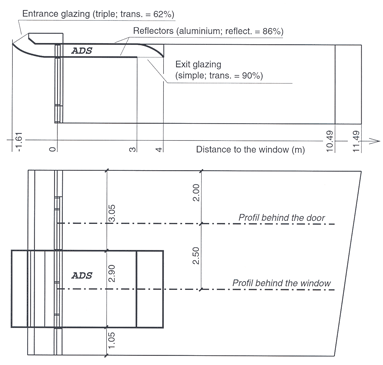Projects
Anidolic systems have been integrated in the façade of the EPFL LESO building in Lausanne as well as, more recently, in Singapore’s Changi Airport, Terminal 3.
Below are projects that were proposed but unfortunately not built.
Building refurbishment of Caisse-Conge in Brussels (Belgium)
A design project for the refurbishment of the Caisse-Conge building in Brussels (Belgium,) was carried out by the architects Philippe Samyn and partners. This project, which won the second price of the project competition, accounted for an Anidolic Zenithal Collector to improve the daylight penetration into the building (see Figures).

Computer rendering of the project of refurbishment of Caisse-Conges building in Brussels, based on façade integration of Anidolic Zenithal Collectors

Closer view of the building façade in courtyard
The assessment of the daylighting performance of the anidolic device, carried out by the Belgium Building Research Institute, confirmed the the outstanding features of the Anidolic Zenithal Collector with regard to daylight penetration into deep rooms. The architectural impact of the device is however not negligible: it offers in this case an opportunity to a non conventional “façade expression”, which contributes to the quality of the project.
New building project Techno Park Siegen (Germany)
A new building design in the Technology Park of Siegen (Germany) was undertaken by the Dutch architects Rau and Partners of Amsterdam (NL). The integration of an Anidolic Ceiling within a large conference room was requested from the Solar Energy and Building Physics Laboratory, in ordre to enhance the daylight penetration in the building space .

Horizontal cross-section of the new designed building of Techno Park Siegen

Novel Anidolic Ceiling design developped for the conference room of the TechnoPark building
A novel design of Anidolic Ceiling was developed for the purpose of the project. The luminous performance was assessed through computer simulations : they confirmed the substantial improvement of the daylight factor achieved by this device, in its original design and set-up on the DEMONA daylighting test modules.